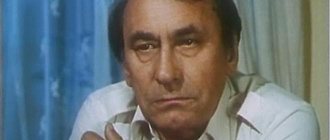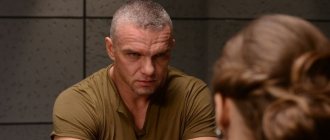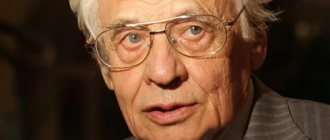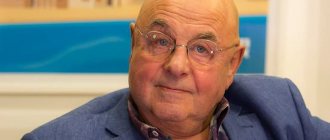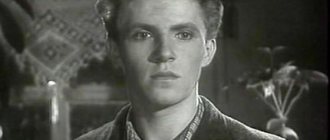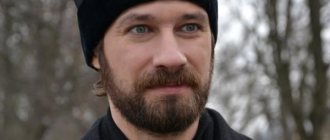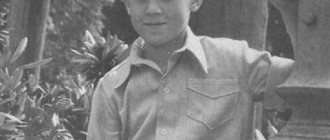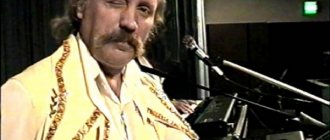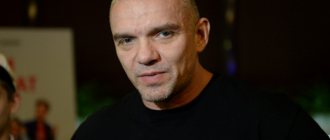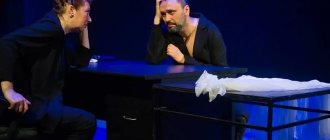Parents
Vladimir’s last name, which he received at birth, is Kolmanovich. The boy was born on December 18, 1930 in the Crimean city of Simferopol.
His paternal grandfather was a first-class tailor. Father, Kolmanovich Yakov Davidovich, born in 1908, was of Jewish origin, worked all his life in leadership positions. When Volodya was born, he was in charge of the rationalization bureau. After moving to Moscow, he was appointed to the position of chief engineer at the People's Commissariat of Light Industry. After the war, he spent some time teaching. In 1948, he headed one of the largest and oldest clothing sewing enterprises in the Soviet Union - the Bolshevichka factory. In 1952, he was transferred to the position of chief engineer of the factory.
Mother, Vera Borisovna (maiden name Pelekh), born in 1910, was engaged in tailoring at home. When the Great Patriotic War began, the Kolmanovich family was evacuated to Magnitogorsk. My father supervised the sewing of uniforms for the Soviet army, my mother worked with him in production.
Education
Since his father was often transferred to a new place of work, Vladimir’s early childhood years were spent in Leningrad and Kyiv.
After the evacuation in 1944, the Kolmanovichs moved to Moscow. They were given an apartment on Kutuzovsky Prospekt. Here Volodya went to study at the Moscow Secondary Art School under the USSR NARKOMPROSS. He himself called this educational institution a school for gifted children. And the fact that Vladimir was gifted by nature became clear at an early age. Parents noted that their son had a special mindset: being a very small boy, he thought and reasoned like an adult.
Having received a certificate of secondary education in 1949, Volodya became a student at the Moscow Art Theater School, studied there for a year, and then transferred to the State Art Institute of the Estonian SSR (now the Estonian Academy of Arts) to major in theatrical decoration (scenography). He was one of the smartest and most capable students.
His thesis was remembered by many teachers because a scandal broke out during his defense. Voroshilov made sketches of costumes and scenery for productions of Oliver Goldsmith’s plays “Night of Errors” and A. N. Arbuzov’s “Years of Wandering.” For that period, this was a kind of challenge; Khrushchev’s thaw was just beginning, and then a Soviet student took an eighteenth-century Western play for his graduation project. Many saw this as a deliberate departure from the problems of Soviet modernity.
Broken ceiling of Lenkom
After finishing his studies in Estonia, Vladimir studied at the Moscow Art Theater School in the staging department. In 1954, he was assigned for a year to East Germany to the theater of a group of Soviet troops, where Vladimir was supposed to do decorations, create a wall newspaper and draw thematic posters.
Here the complex character of the creator began to fully manifest itself. He could afford to leave the theater in the middle of the working day in order to draw German girls in a restaurant. Vladimir did not respond to warnings, and as a result he was fired from the theater, transferring to writing posters and slogans before returning to his homeland.
Boris Kryuk: “Today’s experts have become much smarter”
In the mid-1950s, Vladimir got married, but the marriage did not last long. The young man's main acquisition was the name of his wife, under which he became famous - Voroshilov.
Since 1955, Voroshilov worked as a production designer at the Maly Theater, at the Moscow Art Theater, at the Operetta Theater, at Sovremennik, at the Malaya Bronnaya Theater, at the Taganka Theater, at Lenkom and the Youth Theater. He was considered a fashionable and innovative artist, whom venerable directors considered it an honor to invite.
In the 1960s, a brilliant theatrical career ended after several scandals. The loudest was his dismissal from Lenkom, where, while working on one of the performances, Voroshilov, without blinking an eye, broke the ceiling that was in his way.
Having stopped working in theaters, Vladimir Voroshilov entered the Higher Directing Courses under the Ministry of Culture of the RSFSR.
Working as a decorator
In 1955, Voroshilov received a diploma and was assigned to East Germany, where a group of Soviet troops was stationed. There he had to prepare the scenery for the army theater. Having escaped abroad, the young man wanted to fully experience the air of freedom, go shopping and restaurants, and communicate with representatives of the German fair sex. He behaved freely, he could even leave during working hours and draw German women in some restaurant.
All this led to a serious conflict; Voroshilov was fired from the army theater. They wanted to send the persistent offender home, but Volodya’s documents turned out to be valid for a year, and it was not possible to expel him from Germany. Then he was assigned a tedious, disgusting job - drawing wall newspapers and writing Soviet slogans on long cloth panels. Later, Voroshilov described this period as a black streak in his life; it seemed to him that he would go crazy from his dull work, and at some point he even had thoughts of suicide.
In 1957, Vladimir returned to Moscow and began actively collaborating with the capital’s theaters as a set designer and director:
- Moscow Art Theater;
- theater on Malaya Bronnaya;
- Stanislavsky Theater;
- Taganka Theater;
- Maly Theater;
- "Lenkom"
- theater named after Ermolova;
- "Contemporary";
- operetta theater;
- Youth Theater
He nevertheless studied at the Moscow Art Theater School in the production department and graduated from the Higher Directing Courses at the State Institute of Theater Arts named after Lunacharsky. His diploma work at the Higher Courses was the production of the play “Storm” by V.N. Bill-Belotserkovsky; in 1967 it was staged at the Lermontov Drama Theater in the Stavropol Territory.
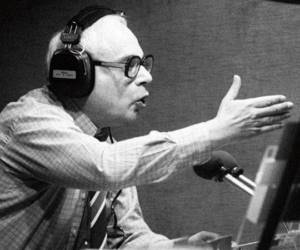
Carier start
In 1955, Kalmanovich returned to Moscow and got a job as a production designer in one of the capital's theaters. During that period, he married for the first time and changed his last name. But he did not have the chance to make a career in the theater. The artist had his own view of creating scenery, very different from the canons of socialist realism. In addition, a harsh character and the habit of saying what you think to the eyes of your superiors also did not contribute to career advancement.
Spells on lavender and its magical properties: for sleep and to awaken dreams
Feed is becoming more expensive: chicken meat and eggs may become more expensive in Russian stores
After a breakup, psychologists advise “disinfecting” social networks
Vladimir changed several Moscow theaters in seven years. And he didn’t stay anywhere. The climax was the scandal at the Lenin Komsomol Theater. The director ordered a pillar of moonlight. For this, the artist simply dismantled part of the ceiling and roof. During these years, Soviet television began to develop. And Vladimir Voroshilov decided to master a new profession for himself by enrolling in the Higher Courses of Directing under the Ministry of Culture of the RSFSR.
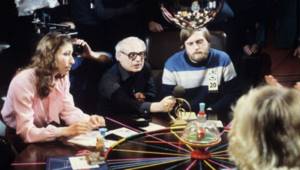
A television
In 1966, Voroshilov received an offer to try himself on television. He began his work here with documentary and educational programs and films:
- became the author and director of the documentary film “Hiroshima” (1967);
- directed a television play based on the play by Soviet writer Valery Osipov “Silver Mushroom Rain” (1967);
- was the author of the script and director of the documentaries “Letters of 1941” and “Testament of 1942” (1968).
In 1970, Voroshilov invented, directed and began hosting the first advertising and game show on Central Television, “Auction.” Participants gave live answers to questions about various products - from sweets to washing machines. The winner was entitled to a prize; there had been nothing like this on Soviet television before that time.
The program was wildly popular, but after six episodes it was taken off the air. This “non-Soviet” format frightened the leadership of Central Television and the country. Vladimir took all the comments with hostility and was banned from appearing on camera, although he was allowed to continue working as a director and screenwriter.
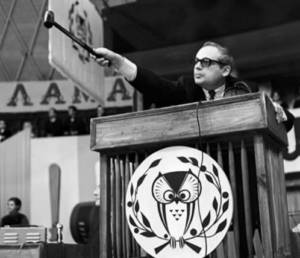
In the early 1970s, Voroshilov came up with a new idea - the “Come on, guys!” program. Unfortunately, due to an accident that occurred on the set, the program also did not stay on the air for long.
"What? Where? When?"
Vladimir did not despair and continued to come up with new ideas. In the early autumn of 1975, he launched another game project called “Family Quiz”. Two families played against each other, located at home and answering questions using home books. But after the broadcast, Voroshilov was not satisfied with the result.
In 1976, he changed the idea, making the quiz show a television youth club “What? Where? When?" with the participation of university students. Then, for the first time, a spinning top appeared on the table; it pointed to the one who would answer. For the correct answer there was a prize - a book. TV viewers liked the program, but Vladimir Yakovlevich again did not like it.
And only in 1977 the program was released in a new format, when a spinning top selects a letter from a viewer, and a team of six people spends a minute searching for an answer to the question asked. The transfer was successful. In 1977, it was broadcast once, and in 1978, as many as nine broadcasts were filmed. In 1979, the team at the table began to be called experts and took advantage of the musical break for the first time.
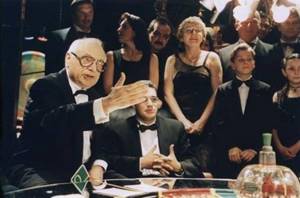
Over the following years, the program turned into one of the most rated, popular and beloved on Soviet television. The battle of experts against television viewers was watched with the same interest as the matches of the USSR hockey team. Connoisseurs became stars and were already equal in popularity to movie actors. Voroshilov achieved tremendous success, but did not stop experimenting with the broadcast format.
During the collapse of the Soviet Union, the “intellectual club”, where the winner received books as a gift, was transformed into an “intellectual casino, and the game now went for money. A huge country collapsed, but the program remained afloat, and Voroshilov’s great merit is in this. In 1997, Vladimir Yakovlevich was awarded the TEFI Prize for the idea and implementation of the project “What? Where? When?".
He was a terrible workaholic, just like his father. Yakov Davidovich always dreamed that someday they would invent pills that, after taking them, a person would not want to sleep at all, and then it would be possible to work endlessly. Vladimir was exactly the same - he worked hard for days on end. No wife, family or friends ever came first for him, only work, and then everyone else.
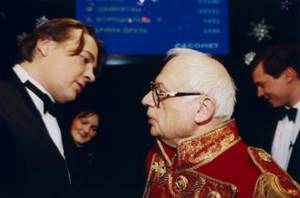
From “Family Quiz” to “Connoisseurs Club”
Despite everything, Voroshilov did not give up, continuing to search and try. On September 4, 1975, a new game program called "Family Quiz" was aired. Two families played against each other. The game consisted of two rounds, filmed at the home of each family. There was no presenter; the two stories were connected in editing using photographs from a family album. Participants had to answer questions from members of the other team using books located in the house. It was also not forbidden to call friends. Time was given to answer not every question, but all questions at once.
After the program aired, Voroshilov was dissatisfied with the result. In 1976, it changed radically - now it was the television youth club “What? Where? When?". Students from Moscow State University took part in the game. At the same time, an invariable attribute of transmission appeared - the top. “Once I went to the Toy House to buy something as a gift for my three-year-old friend. I saw a top with a jumping horse and bought two at once, the second one for myself. I played without leaving home for ten days,” Voroshilov recalled.
There were no teams in the club - everyone played for themselves. The arrow of the top pointed not to the letters from viewers, but to one of the participants who had to answer the question, and immediately, without preparation. Answered the question - get a prize - a book. Answer seven questions and receive the main prize - a set of books. In 1976, only one game took place, hosted by Alexander Maslyakov .
Alexander Maslyakov: “As we live, so we joke”
And this format also did not suit Voroshilov, despite the fact that viewers were interested in the program. In 1977, in “What? Where? When” teams of six people appeared and answered the question after a minute of brainstorming. Now the arrow of the top pointed to the viewer’s letter, and the presenter in the program appeared as a voice-over.
The program was considered successful, and if in 1977 it was broadcast only once, then in 1978 it was broadcast nine times. In 1979, the players were called “experts” for the first time, and a musical break appeared in the program.
Personal life
While Volodya was studying in Estonia, his parents adopted a girl, Anya, and took her from the baby’s home at the age of eight months. But soon trouble struck the family; in December 1952, the father was arrested. Yakov Kalmanovich had an excellent reputation, nevertheless he spent eleven months under investigation. The actual reason for the arrest was his nationality. But everything worked out, and dad was released.
At the same time, Vladimir entered into his first marriage and, in connection with such events, took his wife’s surname, so he became Voroshilov. It is not his fault that he was born a Jew, the young man wanted to live and realize himself, but the Soviet authorities pursued completely opposite goals. He soon divorced his wife, but did not change his last name.
Subsequently, he officially registered his relationships with women three more times. As for the second and third wives, only their last names are known - Bukharkina, Muzyka.
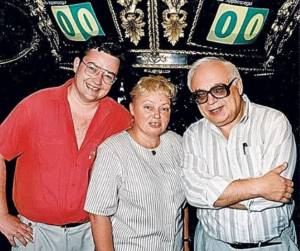
His fourth wife Natalya Stetsenko worked with him on the program “What? Where? When?”, they got married in 1984. Vladimir adopted her son from Boris’s previous marriage.
In addition to his wives, Voroshilov had many affairs; he knew how to please women. Their number included the most beautiful and most famous women in Moscow. Moreover, they did not pursue selfish goals at all; they themselves were quite wealthy.
In recent years, Vladimir Yakovlevich lived in a civil marriage with Natalya Klimova. In 1997, she gave birth to his only daughter, Natasha. For the first time he truly experienced fatherly feelings at the age of 67. He was terrified of small children, because he had never encountered them so closely in his life. When the baby was brought from the maternity hospital, his friend Anatoly Lysenko was visiting Voroshilov’s house. Vladimir asked him to go down first and see if everything was in place for the baby. And only when Anatoly told him that the girl was a beauty, and most importantly, very similar to Voroshilov, did he go to his daughter.
Little Natasha became the meaning of his whole life, he adored his daughter.
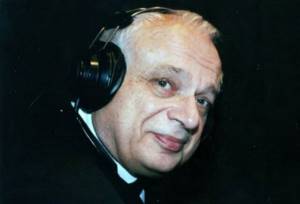
No one could argue with him... Vladimir Voroshilov
“... It’s unfortunate, but the program “What? Where? When?" (which has always had a wide Jewish audience - ed.)
has already outlived its usefulness. At least in its classical sense. The first and main mistake was that we started playing for money. Now I understand that the “smart casino” was just the beginning. The project was ruined by money... Money ruins everything.” (Voroshilov’s statement in one of his last interviews).
VLADIMIR YAKOVLEVICH VOROSHILOV was born in 1930 in Simferopol. His parents had nothing to do with the art world. But the whole of Simferopol knew that his grandfather was a great sewer. His mother had her own home studio. My father held a responsible position in the ministry. During the war, he supervised the sewing of army uniforms. He had an excellent reputation. However, in the 50s the family had to go through a difficult year - Volodya’s father was under investigation for 11 months. Thank God, everything worked out. Back in 1944, the family moved from evacuation to Moscow and settled on Kutuzovsky Prospekt. And Volodya began going to an art school for gifted children...
In total, he studied painting for 16 years! In 1954, after graduating from the Estonian Academy of Arts, he was sent to Germany for a year. Artist in the theater group of Soviet troops. And the young man wanted a breath of freedom: to walk around restaurants, shops, and chat with German women. Which, in general, should not have been done. In addition, he had a conflict with his boss. In general, the troublemaker was quickly called to order. They kicked me out of the theater and forced me to write slogans like “Long live the Great October Revolution!” To this day, Voroshilov remembers that time as the darkest period of his life. He simply went crazy from his stupid work. And even thought about suicide. But all bad things come to an end.
Voroshilov returned to Moscow. He worked in different theaters: in the Maly, in the Moscow Art Theater, in Operetta, in Sovremennik, on Malaya Bronnaya, in the Youth Theater, in Lenkom... He became a fashionable production designer. He drove around in his own car in stunning suits brought from Germany. Had dinner at the Metropol. In general, he led a bohemian lifestyle. And it seemed to everyone that he was happy, but... Dissatisfaction with the fact that he was not an author, but only a performer, pushed him, an ambitious man, to the Higher Directing Courses.
Yes, he didn't make Picasso. Over time, Voroshilov threw away his brushes and paints. The paintings he painted in his youth no longer even decorate the walls of his dacha. And yet, sometimes life makes Vladimir Yakovlevich remember his first profession. Once in Paris he got an ulcer. Voroshilov, who did not know a word of French, could not communicate with the arriving doctor for a long time. Then he picked up a pencil and paper, and they began to exchange drawings. So patient Voroshilov finally understood what he could eat and what he couldn’t.
As soon as he appeared in any theater, the old-timers predicted: “Well, that’s it, Voroshilov has come - expect an explosion!” The scandalous trail followed him all his life. In 1968 he found himself on television. Accidentally. I decided to earn some extra money. His first major project called “Auction” was met with a bang. Voroshilov essentially invented the first live television advertising program. Participants in this game answered questions related to any goods: tea, televisions, furs... Using an auction system. The winner was awarded a prize. And everything would be fine, but Voroshilov came up with the idea to auction off his original song. Very fashionable at that time, but prohibited for the general public. And a scandal of universal proportions broke out. Vladimir Yakovlevich was removed from broadcasting, “exiled” to a collective farm near Moscow to work on potatoes, and then completely fired. Moreover, with a directive: never again should this person appear on the screen. Voroshilov had no choice but to write program scripts under pseudonyms.
Gradually he began to work behind the scenes. And the then television boss Lapin pretended that he didn’t even know about it. Therefore, the famous Voroshilov move in “What? Where? When?" was initially a forced measure. Why did you have to irritate your bosses with your presence on the screen? The mysterious presenter intrigued the whole country for many years. He created his image only with the help of his voice. Nobody knew him by sight. But what performances he staged! Moreover, this was his know-how - no one else used such a technique on television.
But, in the end, he could not stand it incognito and declassified his person. By the way, Eldar Ryazanov pushed Vladimir Yakovlevich to take this step. Once they stood in line together in the Ostankino canteen. Eldar Aleksandrovich at that time was not only everyone’s favorite director, but also the most popular presenter of Kinopanorama. And so Ryazanov was given soup with herbs, and Voroshilov without. Ryazanov threw up his hands: “I told you how many times: work in the frame! At least you’ll get parsley.”
“He is generally a very competitive person,” says Andrei Kozlov, “expert” and host of “Brain Ring”. “More than once we found ourselves at the same table in a restaurant during cruises. And after a couple of days, Voroshilov sat down. I really eat a lot. He saw this and automatically began to eat more than me, so as not to concede in anything.”
Several years ago, Vladimir Yakovlevich went to a holiday home in Dombay. There he met an avid chess fan. And hours-long battles began. Voroshilov was far from an ace and therefore lost. Once, twice, three times, and then suddenly checkmated his opponent. He got angry. He literally lost sleep and knocked on Voroshilov’s room every night, demanding revenge. But Vladimir Yakovlevich did not give in: having won, he immediately lost interest. “He’s not a gambling person,” explains his wife Natalia Stetsenko. “For example, he’s bored in the casino: he’ll never sit at the roulette wheel until he’s blue in the face.” I think the game basically gives him the opportunity to realize his fighting spirit and quench his thirst for constant conflict. Voroshilov is not at all interested in people who do not resist him. Sometimes he asks you something, you don’t have time to open your mouth, and he already starts arguing with you. He can’t live without it.”
Vladimir Yakovlevich lived with his mother, who remained his greatest authority.
He made the most global decisions in his life under her influence. After the broadcast of “What? Where? When?" Voroshilov complained to his colleagues: “Well, Druz lost - Vera Borisovna will kick me out of the house today.” Material prepared by
Yakov KARANDASHENKA
Illness and death
Beginning in 1995, Voroshilov began to be seriously bothered by heart pain. They often called an ambulance for him. The last time this happened was immediately after filming the finale of the winter series of games “What? Where? When?" December 30, 2000. Vladimir Yakovlevich said that there would be no spring series of games; there was even a question of closing the program.
With the onset of the new year 2001, Voroshilov felt better, his heart even faded into the background, and he was more worried about the duodenal ulcer. A massive heart attack occurred unexpectedly, and on March 10, 2001, Vladimir Yakovlevich died.
He was buried on March 13, 2001. We said goodbye to him in the Hunting Lodge of Neskuchny Garden, where the filming of the program “What? Where? When?". The “old-timers” of the program, Voroshilov’s colleagues from the television workshop, and many ordinary Muscovites came to say goodbye to their legendary croupier. When they began to carry out the coffin with the body, the sun appeared among the clouds, as if by order.
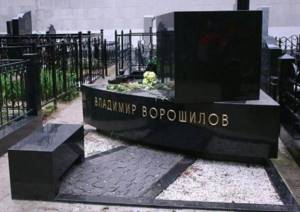
Vladimir Yakovlevich was never distinguished by sentimentality, but in the last days before his death it was as if he could not find a place for himself. He would start writing something, then drop it and sit down in a chair with a book, start calling members of the club of experts, colleagues to talk about this and that. As if he felt his imminent departure and wanted to hear familiar voices again.
After his death, Vladimir Yakovlevich was awarded the TEFI Prize, this time in the nomination “For personal contribution to the development of Russian television.” The game continues to live, it is led by Voroshilov’s stepson, Boris Kryuk.
And at the grave of the creator, “What? Where? When?" erected a monument made according to the design of a member of the team of experts - architect Nikita Shangin. A polished granite cube symbolizing a black box...
